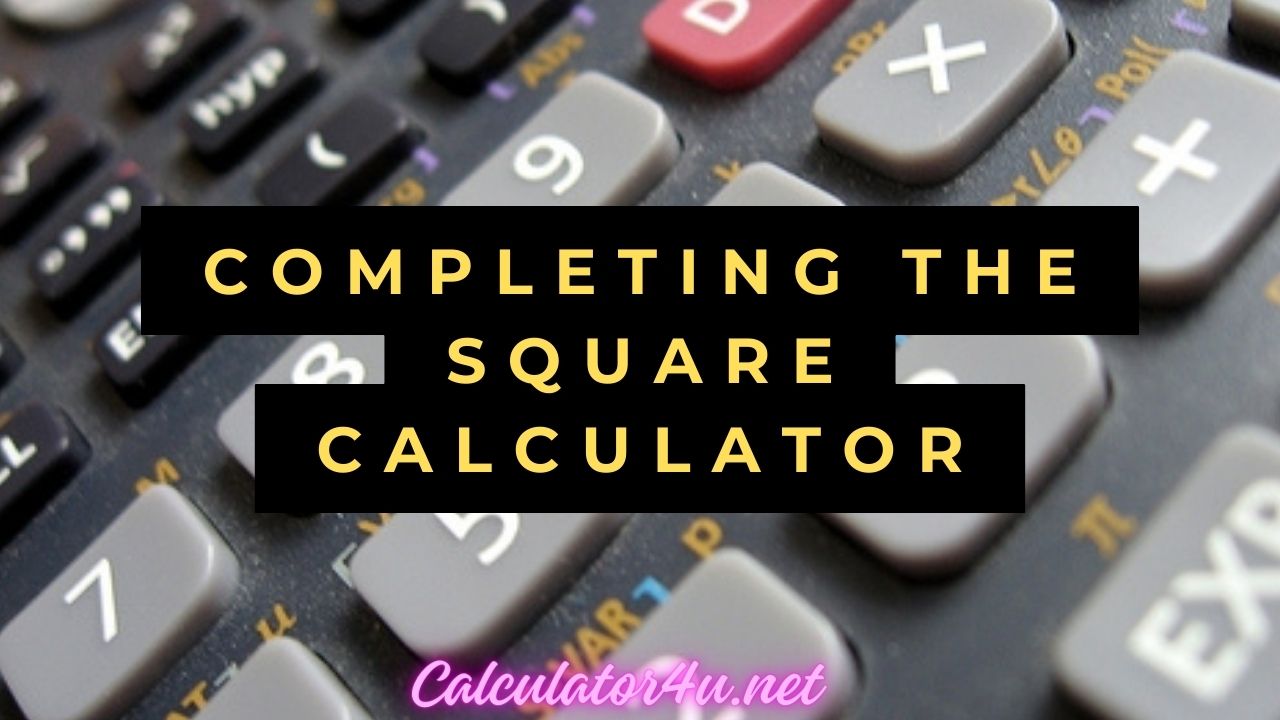Completing The Square Calculator
- Comparing Fractions Calculator
- Common Factor Calculator
- Combination Calculator
- Coefficient Of Variation Calculator
Completing The Square Calculator with Steps
Easily complete the square of quadratic equations with our calculator. Learn how to input expressions, apply rules, and interpret results. Simplify your algebraic calculations now!
Table of Contents
Completing The Square Calculator
Welcome to our Completing the Square Calculator guide. Completing the square is a method used to solve quadratic equations by transforming them into a perfect square trinomial. In this article, we’ll explore how to use the Completing the Square Calculator to simplify quadratic equations effortlessly.
Completing The Square Calculator Overview
Understanding Completing the Square
Completing the square involves transforming a quadratic expression of the form x2+bx+c into the form (x+h)2+k, where ℎh and k are constants. This process facilitates solving quadratic equations and graphing parabolas.
Importance of Completing the Square
Completing the square is essential for:
- Solving quadratic equations when factoring is not straightforward.
- Graphing quadratic functions in vertex form.
- Deriving the quadratic formula.
How the Calculator Works
Our Completing the Square Calculator provides a user-friendly interface for completing the square of quadratic equations. Simply input the coefficients a, b, and c of the quadratic expression, and the calculator will perform the necessary steps to complete the square.
Step-by-Step Guide to Using the Calculator
- Enter Coefficients: Input the coefficients a, b, and c of the quadratic expression x2+bx+c.
- Compute Result: The calculator will apply the completing the square method to transform the quadratic expression into vertex form.
- Review Output: Examine the simplified quadratic expression in vertex form provided by the calculator.
Practical Applications
Completing the square is applied in various mathematical contexts, including:
- Physics: Modeling motion under gravity and projectile motion.
- Engineering: Analyzing circuits and optimizing designs.
- Computer graphics: Rendering smooth animations and curves.
Advantages of Using the Calculator
- Accuracy: Provides precise transformations of quadratic expressions into vertex form based on the input coefficients.
- Efficiency: Saves time and effort by automating the completing the square process, especially for complex quadratic equations.
- Versatility: Can handle a wide range of quadratic expressions, including those with rational and irrational coefficients.
FAQs
Q: Can the calculator handle quadratic equations with complex solutions?
A: Yes, the calculator can complete the square of quadratic equations with complex solutions, providing the transformed expression in vertex form.
Q: What if the leading coefficient a is not 1?
A: The calculator can handle quadratic equations with any leading coefficient a, applying the completing the square method accordingly.
Q: How does completing the square help in graphing quadratic functions?
A: Transforming quadratic expressions into vertex form makes it easier to identify the vertex of the parabola and its axis of symmetry for graphing.
Q: Are there alternative methods for solving quadratic equations?
A: Yes, besides completing the square, quadratic equations can be solved using factoring, the quadratic formula, or graphing techniques.
Q: Can completing the square be applied to other types of polynomials?
A: Completing the square is primarily used for quadratic equations but can be extended to some cubic expressions with specific forms.
Conclusion
In conclusion, the Completing the Square Calculator offers a convenient and efficient way to simplify quadratic equations and express them in vertex form. By following the steps outlined in this guide and utilizing the calculator’s features, you can streamline your algebraic calculations and solve quadratic equations effectively.

